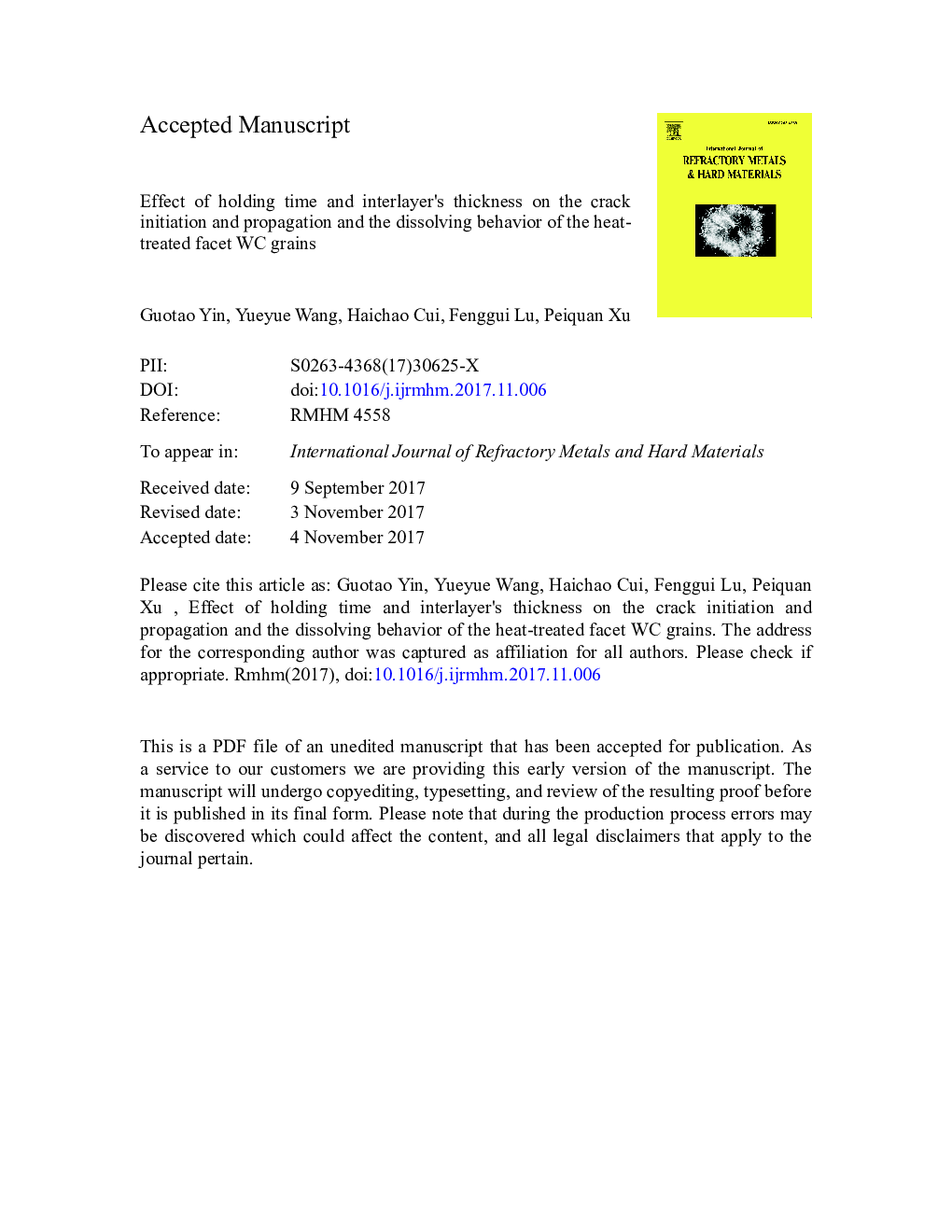| Article ID | Journal | Published Year | Pages | File Type |
|---|---|---|---|---|
| 7989800 | International Journal of Refractory Metals and Hard Materials | 2018 | 48 Pages |
Abstract
Post welding heat treatment was performed on dissimilar weldments composed of WC-Co to 316 L stainless steel with 1-mm-, 1.5-mm-, and 2-mm-thick Invar interlayers by heating the samples to 1250 °C for 2 h, 8 h, and 16 h respectively. Cracks initiation and propagation were observed in all samples because of the stress relieving after heat treatment. The increase of the interlayer's thickness tends to partially inhibit the initiation and propagation of cracks. When the holding time is 2 h, the sample fractured in the heat affected zone (HAZ). With the increase of holding time (8 h, 16 h), the samples tended to fracture in the fusion zone. The dissolving behavior of prismatic facets estimated by means of high-angle annular dark field (HAADF) microscopy indicated that the shape of WC grains changed to faceted WC grains during the heat treatment, which exhibited abnormal grain growth in the matrix composing of α-Co and γ-(Fe, Ni). In the fusion zone adjacent to the WC-Co, W-M-C carbides skeleton were formed with a character of continuous rods and isolated islands. The islands had lower tungsten and more binders than the rods. By using transmission electron microscopy - energy dispersive spectroscopy (TEM-EDS), it was found that WC grains and WC/Co/WC interface showed strong plastic deformation with obvious elemental diffusion. Moiré fringes inside the WC and in the matrix were confirmed.
Keywords
Related Topics
Physical Sciences and Engineering
Materials Science
Metals and Alloys
Authors
Guotao Yin, Yueyue Wang, Haichao Cui, Fenggui Lu, Peiquan Xu,
